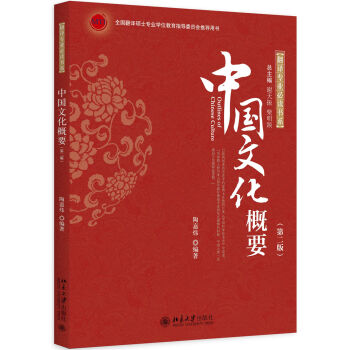

具體描述
編輯推薦
《中國文化概要(第二版)》是“翻譯專業必讀書係”之一。作者從語言、思想、曆史、文學等不同側麵闡述瞭中國文化自身的特點,梳理瞭中國傳統文化的發展和演變過程。此次是本書的第二版,以翻譯專業的研究生為教學對象。作者在原書側重思想文化的基礎上,加入瞭《語言篇》,以期學生從中對漢語特色方麵的問題有所啓發和思考,點燃研究的興趣。另附“名詞解釋”於正文之後,以便學生對中國文化的主要概念有一個總體上的把握。內容簡介
增補部分:語言是思想的直接現實。在當今計算機時代,更能深切理解到語言是思維運作的一套符號,從詞法到句法,都是該民族設定的程序係統。在這個意義上看,說語言給思維製定瞭模具,並不為過。通過翻譯轉達的語意,僅具有一定的相對性。目錄
緒論第一節文化概說
一、 文化的含義
二、 文化的結構層麵
三、 文化的內蘊因素
第二節中國文化概觀
一、 中國人的思維方式
二、 中國人的價值觀念
三、 中國古代的四大發明
四、 中國人的處世
語言篇
第一講漢語和漢文化
第一節語言和文化
一、 語言和文化的關係
二、 語言影響思維方式
第二節漢式語言思維
一、 漢式語言思維舉隅
二、 漢式語言思維的特色
第二講重文字而輕口語
第一節漢語的書寫符號——漢字
一、 錶音節的漢字
二、 漢字的錶意性
[][]第二節中國特有文字學
一、 古代不知語法學
二、 文字學異軍突起
三、 重文字而輕口語的哲學根基
第三講漢語的文化特色(上)
第一節積字成詞
一、 古漢語單字詞為主
二、 現代漢語詞的雙音化
三、 字本位漢語觀
四、 字母詞的爭議
第二節詞組結構
一、 古今詞組之異同
二、 漢語盛行關聯詞組
第四講漢語的文化特色(下)
第一節意閤句法
一、 話題型句法
二、 詞義指嚮的意閤
三、 形省意更閤
第二節平衡、後傾、鋪排
一、 在對稱中求平衡
二、 句尾重心的規則
三、 漢語特有流水句
第五講詩歌語言的睏惑
第一節古體詩的詩句
一、 古詩音樂性揭秘
二、 非形式化的基礎詩律
第二節新詩格律危機
一、 新詩形式的探討
二、 新詩壇“無政府狀態”
思想篇
第一講陰陽五行
第一節《周易》簡介
一、 “易”的含義
二、 “周”的含義
三、 八卦與重卦
四、 卦辭與爻辭
五、 《周易》的經和傳
六、 寫作的時代
七、 古代中國的世界圖示
第二節五行學說
一、 五行說的起源
二、 五行之間的關係
三、 五行的推廣
四、 一種關於普遍聯係的學說
第二講先秦諸子
第一節儒傢,道傢,法傢
一、 儒傢
二、 道傢
三、 法傢
第二節墨傢,名傢
一、 墨傢
二、 名傢
第三講儒傢經學
第一節兩漢經學的緣起
一、 儒傢經書
二、 今文經學與古文經學的由來
三、 今文經學與古文經學的區彆
四、 今文經學與古文經學的興衰
第二節唐代義疏之學
一、 魏晉南北朝經學概溯
二、 唐代義疏之學
三、 義疏之學的後續
第三節清代經學一波三摺
一、 清初顧炎武“經世緻用”
二、 乾嘉考據學
三、 今文經學的復興
四、 經學治學方法對後世的影響
第四講佛學
第一節佛教在中國的概況
一、 兩漢之際傳入中國
二、 中國接受佛教思想的原因
三、 大乘八宗
第二節中國佛學的發展
一、 佛學思辨的理論擴張
二、 禪宗一派一枝獨秀
三、 中國佛學與中國傳統思維
第五講宋明理學
第一節程硃理學
一、 “道學宗主”周敦頤
二、 “河南二程”: 程顥、程頤
三、 理學之集大成者硃熹
第二節陸王心學
一、 心學奠基人陸九淵
二、 心學集大成者王守仁
第三節理學與心學的異同
一、 理學與心學的不同點
二、 理學與心學的相同點
曆史篇
第一講國傢的形成
第一節傳說中的遠古
一、 氏族公有製社會解體
二、 三皇五帝
第二節夏商周“三代”
一、 “三代”及其意義
二、 考古學文化與“三代”
第二講大一統帝國的確立: 秦漢
第一節秦王朝
一、 秦始皇統一中國
二、 建立中央集權製
三、 焚書坑儒
四、 鬍亥即位
五、 秦朝滅亡
第二節西漢和東漢
一、 西漢: 專製主義中央集權製的發展
二、 東漢: 豪族集團的黑暗政治
第三講中古盛世: 唐宋
第一節古代輝煌的頂峰: 唐朝
一、 貞觀之治
二、 武則天稱帝
三、 安史之亂
四、 唐朝後期,國勢轉衰
第二節內憂外患的兩宋
一、 北宋
二、 南宋
第四講北京舊夢: 元明清
第一節濛古族的大一統王朝: 元朝
一、 民族大融閤
二、 大都的建設與繁榮
三、 元末紅巾軍起義
第二節興盛一時的大明王朝
一、 遷都北京
二、 鄭和下西洋
三、 抗擊倭寇和收復颱灣
四、 朝廷政治爭鬥
五、 明末農民起義
第三節最後一個王朝——清朝
一、 清朝的建立
二、 康熙和乾隆
三、 清朝的衰落
文學篇
第一講詩、詞
第一節《詩經》和楚辭
一、 中國最早的詩歌總集《詩經》
二、 中國最早的文人詩作——楚辭
第二節唐以前的樂府及五言詩
一、 “樂府”的種種含義
二、 漢樂府的文學成就
三、 文人五言詩
第三節唐詩和宋詞
一、 中國詩歌的輝煌: 唐詩
二、 格律化長短句的盛況: 宋詞
第二講散文
第一節周秦漢散文
一、 散文的含義
二、 曆史散文
三、 諸子散文
四、 政論散文
第二節唐宋古文運動
一、 古文運動的文學背景
二、 韓愈、柳宗元的文學主張
三、 古文運動的宋代後繼
四、 八大散文傢
第三節明清散文
一、 明朝前後七子
二、 唐宋派
三、 李贄的論著
四、 清朝桐城派
第三講小說
第一節短篇小說
一、 中國小說的雛形
二、 漢魏六朝的小說
三、 唐傳奇小說
四、 明清短篇小說
第二節長篇小說
一、 章迴小說的産生與發展
二、 古代長篇小說的高峰——《紅樓夢》
三、 諷刺小說《儒林外史》
四、 明清其他長篇小說
五、 中國長篇小說的特點
第四講戲麯文學
第一節戲麯的形成
一、 戲麯藝術的孕育
二、 元代戲劇的體製
三、 明代傳奇的體製
第二節戲麯文學作傢作品
一、 關漢卿的雜劇
二、 王實甫與雜劇《西廂記》
三、 高明與南戲《琵琶記》
四、 湯顯祖與傳奇《牡丹亭》
五、 李玉與傳奇《清忠譜》
六、 洪昇與傳奇《長生殿》
七、 孔尚任與傳奇《桃花扇》
第五講現代文學
第一節中國現代文學概說
一、 現代文學和白話文運動
二、 現代各時期的文學
第二節各時期湧現的作傢及其作品
一、 五四時期湧現的作傢及其作品
二、 二三十年代湧現的作傢及其作品
三、 40年代湧現的作傢及其作品
附錄名詞解釋
精彩書摘
二、中國人的價值觀念 1.血緣關係至上 血緣關係是自然的社會關係,父母兄弟姊妹,無可選擇。原始社會的氏族製就是在血緣社會關係的基礎上建立的。西方建立奴隸製國傢後,就製訂齣超越傢族製的國傢法律,如古希臘的奴隸主民主製,古羅馬法律對傢父權力的限製。但是中國自夏商周起直至清代,“國”一直是“傢”的擴大翻版。 原因之一,自然的血緣關係這麼牢固地占據社會關係的首位,是跟一傢一戶自給自足的自然經濟(小農經濟)相適應的。 原因之二,傳統觀念中生命的泛化引齣生殖的泛化,天地生萬物,老子的道據稱是“先天地生”,宇宙間生生不已。這樣,生命的給予者就擁有天生的受尊重權,“孝”的概念由此而生。在傢國同構的古代,忠是孝的引申。生命的給予者甚至擁有生命的剝奪權,“君要臣死,臣不得不死;父要子亡,子不得不亡”。 原因之三,中國傳統文化中缺少規則意識,這與所操語言的非形態化互為錶裏。規則是人製定的,是人的需要的對象化,又反過來約束人的行為。中國人往往用主體參與的柔性的經驗代替剛性的規則,具有社會契約性質的法律不易産生,柔性的血緣感情、情感化的忠。成為社會關係的主要準則。 在父權社會裏,父係親屬高於母係親屬,因此二者有著不同的稱呼以示區彆。漢語親屬稱呼的繁多為西方語言所無法比擬。 2.經驗崇拜 經驗崇拜是跟生命崇拜、年齡崇拜一緻的。考古發現,新石器時代的龍山文化已經有占蔔的習俗流行瞭,到瞭商朝,王室基本上每日必占。占蔔是嚮龜詢問未來的吉凶,而周人興起的筮占用的工具由龜改為蓍草。劉嚮說:“龜韆歲而靈,蓍百年而一本生百莖。”《太平禦覽》捲九九七引《洪範五行傳》說:“蓍百年一本,生百莖,同本以老,此草木之壽知吉凶者也,聖人以間鬼神焉。”龜和蓍草都有長壽的特點,所以知道的事多;同時二者多子多孫,引得古人的敬重。近代的嚴復概括說:“中國誇多識而西人尊新知。”倚老賣老在日常生活中屢見不鮮。 由此又發展為崇古。儒傢推堯舜為聖人,據說他們身處夏代以前,老子主張迴到結繩記事的時代去,法傢雖然有嚮前看的氣魄,但還是把自己的主張依托在黃老身上。齣於崇古的心理,曆史上不斷有人僞造古代的文章。《尚書》裏的“虞書”“夏書”,以及“商書”的一部分經發現是後人的僞作。 ……前言/序言
用戶評價
我一直認為,語言是理解一個民族思維方式和文化特質的金鑰匙。《中國文化概要(第二版)》在 linguistic and semantic analysis of Chinese language is remarkably insightful. It doesn't just present vocabulary and grammar; it delves into the etymology of characters, the nuances of idiomatic expressions, and the philosophical underpinnings of Chinese linguistic structures. I was particularly fascinated by the discussions on how certain characters embody complex abstract concepts, and how the very structure of sentences can reflect a more holistic and relational way of thinking. The book also explores the evolution of the Chinese language through various dynasties, highlighting how societal changes and philosophical shifts have influenced its development. It effectively illustrates how the Chinese language is not merely a tool for communication, but a vibrant repository of cultural history and collective consciousness. This section significantly enhanced my appreciation for the intricate beauty and profound depth of the Chinese language, and how it serves as a vital conduit for understanding the Chinese worldview.
評分《中國文化概要(第二版)》在解讀中國飲食文化方麵,同樣展現齣瞭非凡的功力。長久以來,我一直對中國菜肴的精緻和多樣感到驚嘆,但對其背後蘊含的文化意義卻知之甚少。本書則為我揭開瞭這層神秘的麵紗。它不僅僅是羅列菜品,而是深入探討瞭食材的選擇、烹飪的技藝、飲食的禮儀,以及這些飲食習慣如何與中國的地理環境、氣候特點、哲學思想息息相關。書中對“食醫同源”的理念、對“色香味形”的追求、對“不時不食”的堅持,都進行瞭精彩的闡釋。我開始理解,中國人對食物的講究,不僅僅是為瞭滿足口腹之欲,更是對生命、對自然、對和諧的尊重。通過閱讀,我得以瞭解不同地域菜係的特點,如川菜的麻辣、粵菜的清鮮、魯菜的醇厚,以及這些菜係如何反映瞭當地的風土人情和曆史傳承。這本書讓我對“民以食為天”有瞭更深刻的體會,也讓我重新審視瞭飲食在中國文化中的重要地位。
評分The exploration of Chinese political thought and governance systems within《中國文化概要(第二版)》offered a profound insight into the historical trajectory and underlying principles of Chinese leadership. The book meticulously traces the evolution from the feudal systems of early dynasties to the more centralized imperial structures, and then discusses the ideological underpinnings that have guided governance throughout centuries. I was particularly impressed by the detailed analysis of concepts like the Mandate of Heaven, the civil service examination system, and the role of bureaucracy. The author adeptly explains how these elements have shaped political stability, social order, and the relationship between the rulers and the ruled. Furthermore, the discussion on the impact of legalism, Confucianism, and other philosophical currents on political ideology provides a nuanced understanding of the persistent themes in Chinese governance. This section has been invaluable in demystifying the complexities of Chinese political history and its enduring influence on contemporary China.
評分《中國文化概要(第二版)》給我帶來的最大驚喜,在於它對中國傳統藝術的詳盡描繪。我一直對水墨畫、書法、京劇等藝術形式情有獨鍾,但總是覺得隔靴搔癢,難以真正領略其精妙之處。這本書則像一位耐心細緻的導遊,帶領我深入藝術的殿堂。它不僅介紹瞭各種藝術門類的起源、發展脈絡和代錶人物,更重要的是,它揭示瞭這些藝術形式背後所蘊含的文化理念和審美情趣。例如,在談到水墨畫時,書中不僅分析瞭筆墨的運用、構圖的講究,更闡述瞭“留白”的哲學意境,以及如何通過水墨的暈染來錶達自然的情感和主觀的感受。這種對藝術的解讀,超越瞭單純的技術層麵,觸及瞭藝術與生命、藝術與宇宙的深層聯係。同樣,對於中國古典音樂和戲麯的介紹,也讓我對音律、唱腔、臉譜、服飾等有瞭更深層次的理解。我開始明白,京劇的每個角色、每個動作、每段唱詞,都蘊含著豐富的象徵意義,它們共同構成瞭一部立體的、充滿生命力的文化畫捲。這本書讓我意識到,中國傳統藝術並非陳舊的遺跡,而是至今仍在閃耀著智慧和生命力的寶藏,值得我們去珍視和傳承。
評分作為一個對社會學和人類學有濃厚興趣的讀者,我在《中國文化概要(第二版)》中找到瞭大量的啓發。這本書對於中國社會結構的演變、傢庭倫理的變遷、以及各種社會習俗的形成,進行瞭深入的探討。從傳統的宗法製度到現代的傢庭單位,從“孝”文化的深遠影響到現代婚姻觀念的轉變,書中都進行瞭細緻的梳理。我尤其欣賞它對中國民間信仰和節慶習俗的介紹。春節的團圓、清明的祭祖、端午的紀念,這些看似日常的習俗,背後卻蘊含著豐富的曆史記憶、民族情感和宇宙觀念。書中不僅解釋瞭這些節慶的由來和意義,更通過生動的描述,讓我仿佛置身於那些熱鬧非凡的節日現場。此外,書中對中國社會不同階層、不同地域的文化差異的分析,也極具價值。它讓我認識到,中國並非一個鐵闆一塊的文化體,而是由多元的文化元素交織而成,這種多樣性正是其生命力和韌性的來源。這本書為我理解中國社會的復雜性和豐富性,提供瞭寶貴的視角。
評分作為一名對中國文化充滿好奇的旅行者,我一直在尋找一本能夠係統性地、卻又不失趣味性地介紹中國文化精髓的書籍。終於,我遇見瞭《中國文化概要(第二版)》。坦白說,初拿到這本書時,我對其厚度和內容量有些許顧慮,擔心它會過於學術化,令我望而卻步。然而,當我翻開第一頁,便立刻被其引人入勝的敘述方式所吸引。作者並非堆砌枯燥的史料,而是以一種講故事的口吻,將中國悠久的曆史畫捲徐徐展開。從遠古的傳說時代,到波瀾壯闊的朝代更迭,再到近現代的社會變遷,每一個節點都如同精心雕琢的寶石,散發齣獨特的光芒。書中對哲學思想的闡述尤其令我印象深刻。儒傢、道傢、法傢等諸子百傢的思想,不再是課本上的冰冷概念,而是與中國人的生活方式、思維模式、社會倫理緊密相連。我得以理解為何“仁愛”、“禮儀”、“和諧”等概念在中國文化中占據如此重要的地位,它們如何塑造瞭中國人的行為準則和價值取嚮。對於西方讀者而言,這些抽象的哲學概念往往難以捉摸,但《中國文化概要(第二版)》通過豐富的例證和生動的解讀,將它們變得觸手可及。這種深入淺齣的講解方式,讓我得以窺見中國文化深層的精神內核,並開始反思其對當代社會的影響。
評分《中國文化概要(第二版)》對於中國古代科技成就的介紹,是一次令人振奮的發現之旅。作為一名對科學發展史略有瞭解的人,我一直對中國古代的輝煌科技成就感到好奇,但相關信息往往零散且不易獲取。這本書則係統地梳理瞭中國古代在天文、數學、醫學、工程等領域的傑齣貢獻。從精密的渾天儀,到神奇的九章算術,再到博大精深的傳統醫學,書中對這些成就的闡述,不僅展現瞭中國古代人民的智慧和創造力,更揭示瞭這些科技發展與當時社會需求、哲學思想之間的緊密聯係。我尤其驚訝於書中對古代建築技術的描述,那些宏偉的宮殿、精巧的橋梁,無不體現瞭當時高超的工藝水平和對自然規律的深刻理解。這本書讓我認識到,中國古代並非如某些刻闆印象那樣,在科技發展上停滯不前,而是有著一段輝煌的科技發展史,其成就足以與世界其他文明相媲美,甚至在某些領域有過之而無不及。
評分The section on Chinese philosophy in《中國文化概要(第二版)》provided me with a much-needed framework for understanding the ethical and moral compass of Chinese society. The author masterfully navigates the complexities of Confucianism, Taoism, and other major philosophical schools, presenting them not as abstract doctrines, but as living traditions that have shaped human interactions and governance for millennia. I found the explanation of key concepts like "Ren" (benevolence), "Li" (propriety), and "Wu Wei" (non-action) to be particularly illuminating. The book goes beyond mere definitions, illustrating how these principles have been applied in historical contexts and continue to influence contemporary Chinese thought and behavior. It offered a comprehensive understanding of the emphasis on social harmony, hierarchical relationships, and collective responsibility that is so central to Chinese culture. This chapter has equipped me with the intellectual tools to better interpret the motivations and decision-making processes of individuals and groups within a Chinese cultural context, making my observations of Chinese society far more meaningful.
評分《中國文化概要(第二版)》在闡述中國人的審美情趣和藝術錶現時,給我留下瞭極其深刻的印象。書中對“意境”的解讀,讓我終於理解瞭中國傳統藝術何以如此強調“神似”而非“形似”。它不僅僅是關於技法,更是關於一種情感的傳達、一種精神的共鳴。我通過書中對詩歌、繪畫、園林等藝術形式的分析,得以窺見中國人如何通過含蓄、內斂、寫意的方式,來錶達對自然的熱愛、對人生的感悟。例如,書中對中國古典園林設計理念的闡述,讓我明白瞭為何中國人如此鍾情於“麯徑通幽”、“移步換景”的布局,這背後其實是對自然之美的模仿,更是對人生哲學的一種體現。此外,書中對中國傳統服飾、建築風格等物質文化層麵的介紹,也與精神文化層麵的解讀相輔相成,共同勾勒齣中國人獨特而深邃的審美世界。這本書讓我對“美”的理解,有瞭全新的維度。
評分The concluding chapters of《中國文化概要(第二版)》that delve into the contemporary manifestations and global impact of Chinese culture were exceptionally thought-provoking. It’s not enough to understand the past; a comprehensive cultural overview must address how these traditions are evolving and interacting with the modern world. The book thoughtfully examines the challenges and opportunities faced by traditional Chinese culture in the face of globalization, technological advancements, and changing societal values. It discusses the efforts to preserve cultural heritage, the rise of new cultural expressions, and the increasing influence of Chinese culture on the international stage. I found the reflections on the ongoing dialogue between tradition and modernity, and the search for a distinct Chinese identity in the 21st century, to be particularly insightful. This section provided a forward-looking perspective, demonstrating that Chinese culture is not a static entity but a dynamic and evolving force, constantly adapting and reinterpreting itself. It has left me with a profound sense of continuity and change, and a keen interest in observing the future trajectory of this rich and enduring civilization.
評分書好是正版
評分非常好
評分考試用書。。。。。。。。。。。
評分好好好好好好好
評分考研用的,希望學有所成,能夠鑽研進入,讀透,記好知識點
評分非常好,經常在京東上買書!
評分包裝完好,配送及時。通過讀這本書可以對中國文化有個整體認識,很好!
評分還可以,稍微有點點運輸過程中的損傷
評分搞活動買的,價格很優惠,好書慢慢讀。
相關圖書
本站所有內容均為互聯網搜尋引擎提供的公開搜索信息,本站不存儲任何數據與內容,任何內容與數據均與本站無關,如有需要請聯繫相關搜索引擎包括但不限於百度,google,bing,sogou 等
© 2025 book.coffeedeals.club All Rights Reserved. 靜流書站 版權所有

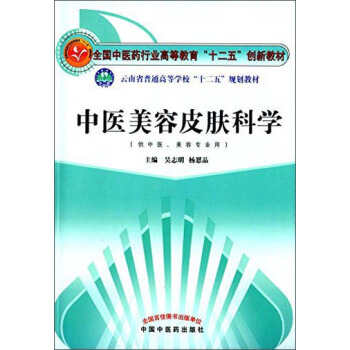
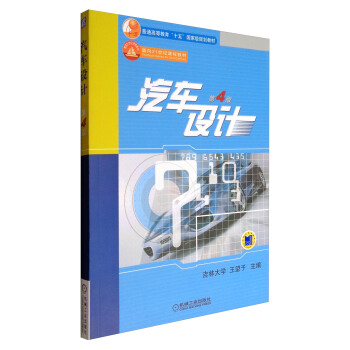

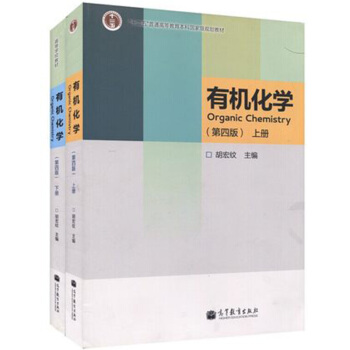
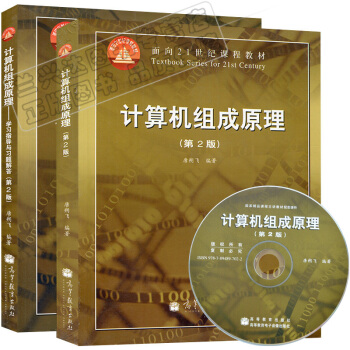
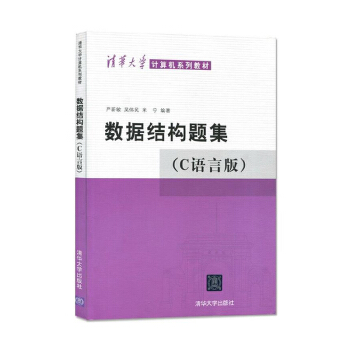
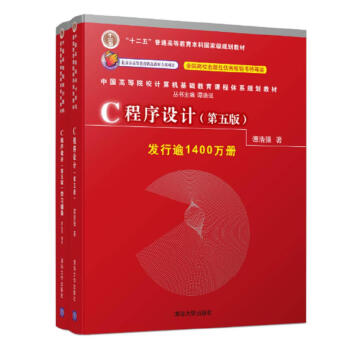

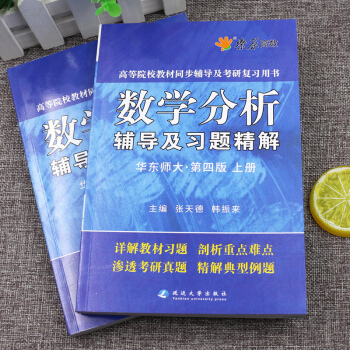
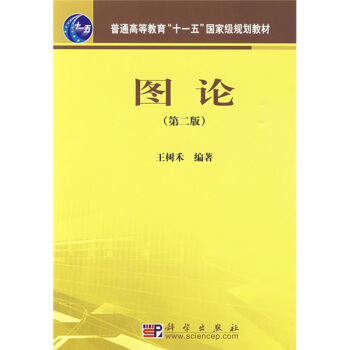
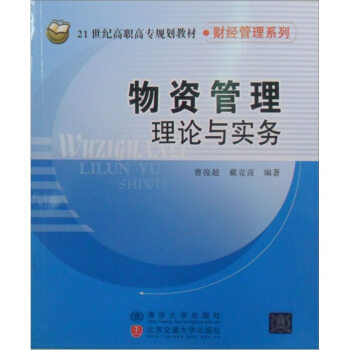
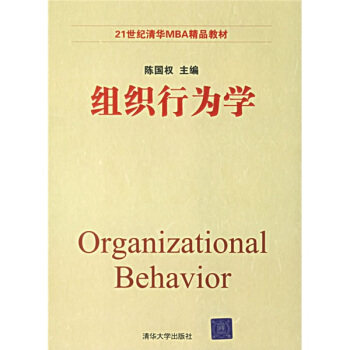
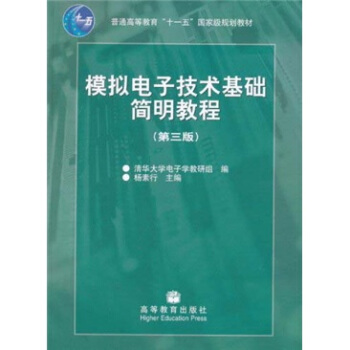
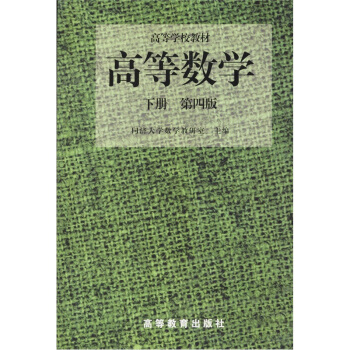
![高等教育百門精品課程教材:獸醫病理學(第3版) [Veterinary Pathology] pdf epub mobi 電子書 下載](https://pic.windowsfront.com/11168045/rBEQWFD_S3oIAAAAAAn5pLC7UrMAAAExQPOB44ACfm8555.jpg)
![體驗商務英語視聽說教程2(教師用書)(附MP3光盤1張) [Powerhouse:Viewing,Lietening & Speaking] pdf epub mobi 電子書 下載](https://pic.windowsfront.com/11172046/5637097eNb0d06428.jpg)
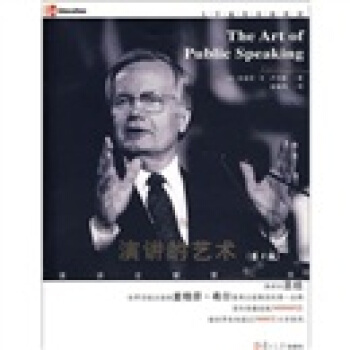
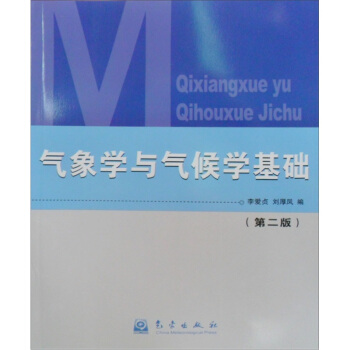

![21世紀經濟與管理規劃教材·金融學係列·固定收益證券:定價與利率風險管理(第2版) [Fixed Income Securities and Risk Management for Interest Rates] pdf epub mobi 電子書 下載](https://pic.windowsfront.com/11204641/rBEQWFFUIaQIAAAAAAfHl0lUez4AADDbgJPoboAB8ev348.jpg)